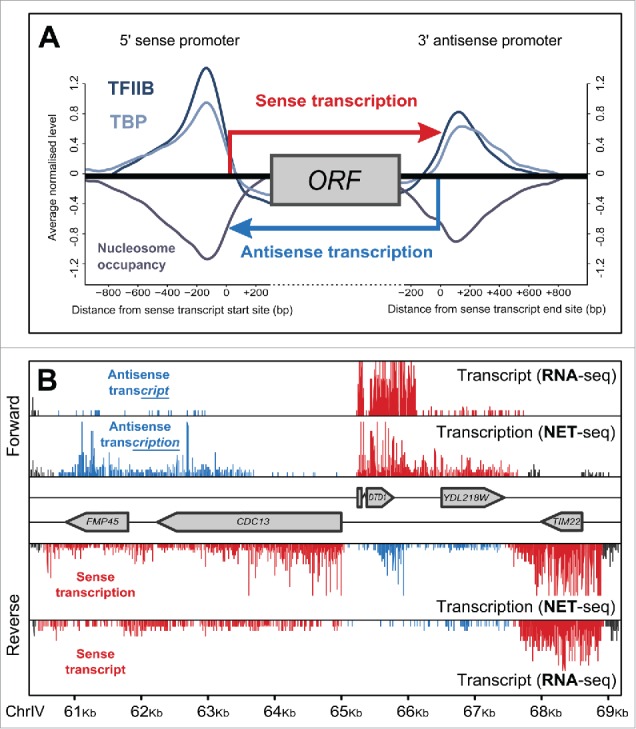FIGURE 1.

(A) The symmetrical nature of genes. Eukaryotic genes typically display transcription across both the sense and antisense strand (red and blue arrows respectively), driven from 2 convergent, opposed promoters. Shown are the average levels of TBP and TFIIB, 2 factors that play a critical role in transcription initiation, as well as nucleosome occupancy, relative to the start site and end site of the sense transcript.4 This reveals the presence of 2 promoter architectures at both ends of the gene, one directing sense transcription and the other antisense transcription, referred to here as the sense and antisense promoters respectively. (B) Transcription occurs extensively on both the sense and antisense strands of genes across the yeast genome. Shown is the level of transcript arising from a given region of S. cerevisiae chromosome IV, measured by RNA-seq, and the level of transcription measured by NET-seq. Reads have been colored as reflecting either sense (red) or antisense (blue) transcription/transcript based on the orientation of their nearest gene. Though antisense transcription is abundant this is not reflected in the level of antisense transcript, which tend to be extensively degraded.
